Growing Carrots from Seed
Carrots can be a rewarding crop to grow in Central Texas. Soil preparation and proper planting time will ensure a good harvest.
We have a fall planting time from late August to early November and a spring planting time of mid-January to early March in Central Texas. If you take advantage of both growing periods you will have a long harvest of delicious carrots to enjoy.
Carrots require a deep, well-drained soil to thrive. Adding 3”-4” of organic matter and a light application of organic fertilizer such as MicroLife or FoxFarm Tomato and Vegetable fertilizer prior to planting will loosen the soil and provide nutrients for the plants when they germinate.
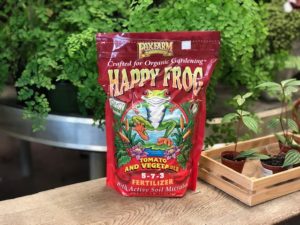
Till or incorporate the compost to a depth of 8”-10” if possible. If you do not have deep enough soil, simply choose the shorter growing varieties of carrots. Do not add barnyard manure unless it is quite decomposed, as it will result in forked and misshapen carrots.
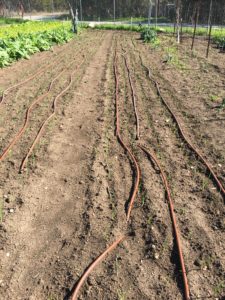
Water the prepared soil several days prior to planting. Use a stick or the edge of a hoe to make a furrow about ½” deep. Sow the seeds at the rate of three to four seeds per inch and cover with ¼” to ½” of soil. Use a handy “seeder” for the small seeds to make it easier. After covering the seeds with soil, use the flat side of the hoe to firm the soil.

After sowing the seed, provide frequent, light applications of water to keep the soil moist and prevent crusting, which could hinder emergence of the seedlings.

Carrot seed germinates between 40° and 95°F at the seeding depth, with 80°F being optimum. The cooler the soil temperature is, the longer the seeds will take to germinate. It could take up to 21 days in the early spring for the seeds to germinate, while it might take a week or so when seeding in the early fall. If sowing in the cooler temperatures, patience and consistent watering will pay off.
Thinning will be necessary for the carrots to develop their full size. When the seedlings are about 3”-4” tall, thin them to about 1” apart. When they have grown to about 6” tall, another thinning to 2” apart will give them the final spacing. The soil should be slightly moist when you thin them so that they pull out from the soil easily without disturbing the neighboring seedlings. Water lightly after thinning to settle the soil around the remaining plants.
After the final thinning to 2” apart, side dress with the recommended fertilizer about 6” from the plants. Mulching, if desired, can take place at this time and will help to conserve moisture around the plants.
Keep the soil in a fairly moist condition as the carrots grow and avoid a fluctuating wet-dry soil, as this leads to splitting of the carrot.
Your young seedlings will need protection from temperatures in the low 20’s. Cover with n-Sulate fabric or a sheet, being sure to anchor it to the ground to capture the ground heat. (Do not use plastic unless it will not touch the plants.) Carrots are quite cold tolerant but will need protecting in severe cold.
Carrots are fairly easy to grow, and oh so tasty to eat! Try some of the red, white, and purple varieties too, as they can be quite sweet and add color to a salad or with other roasted vegetables.
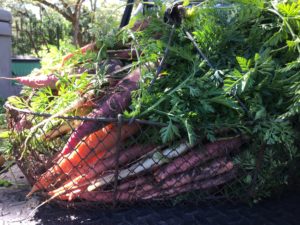


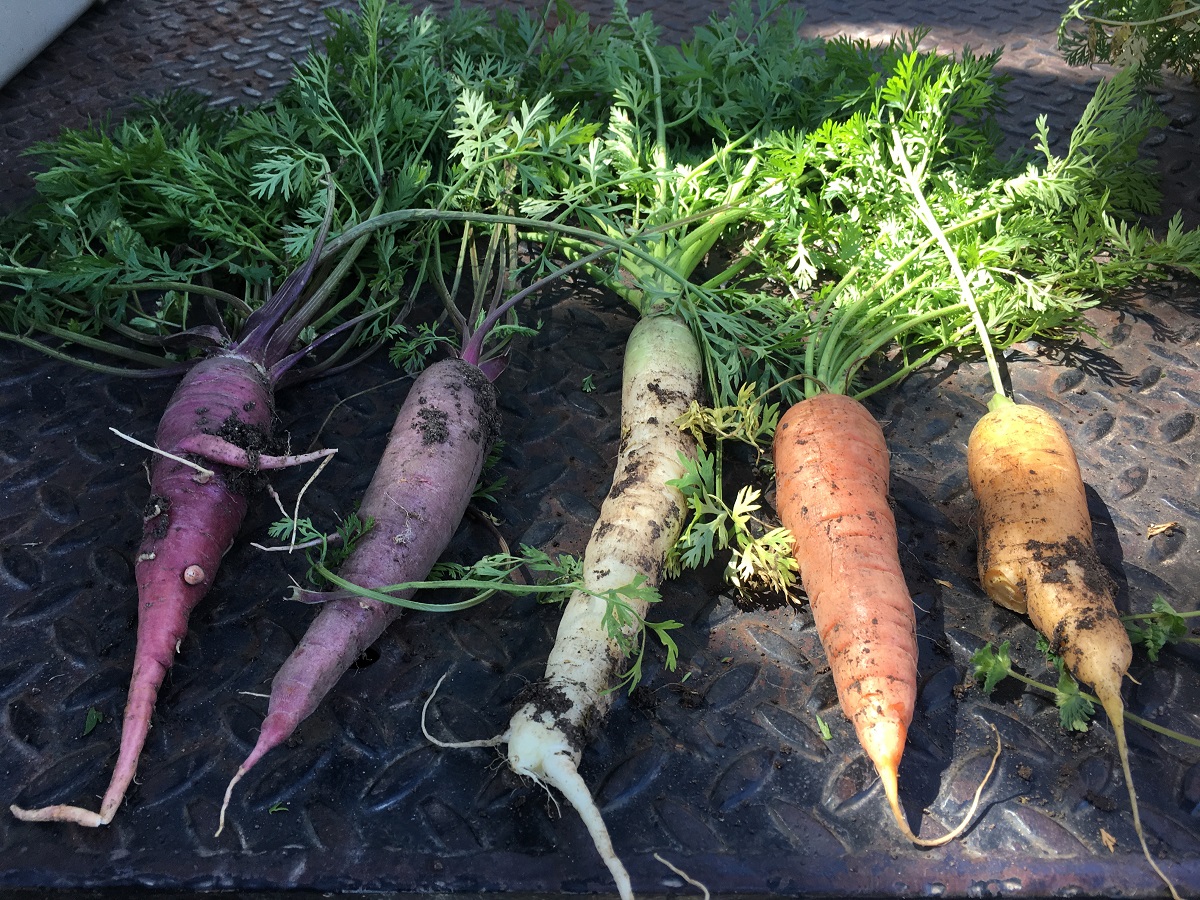

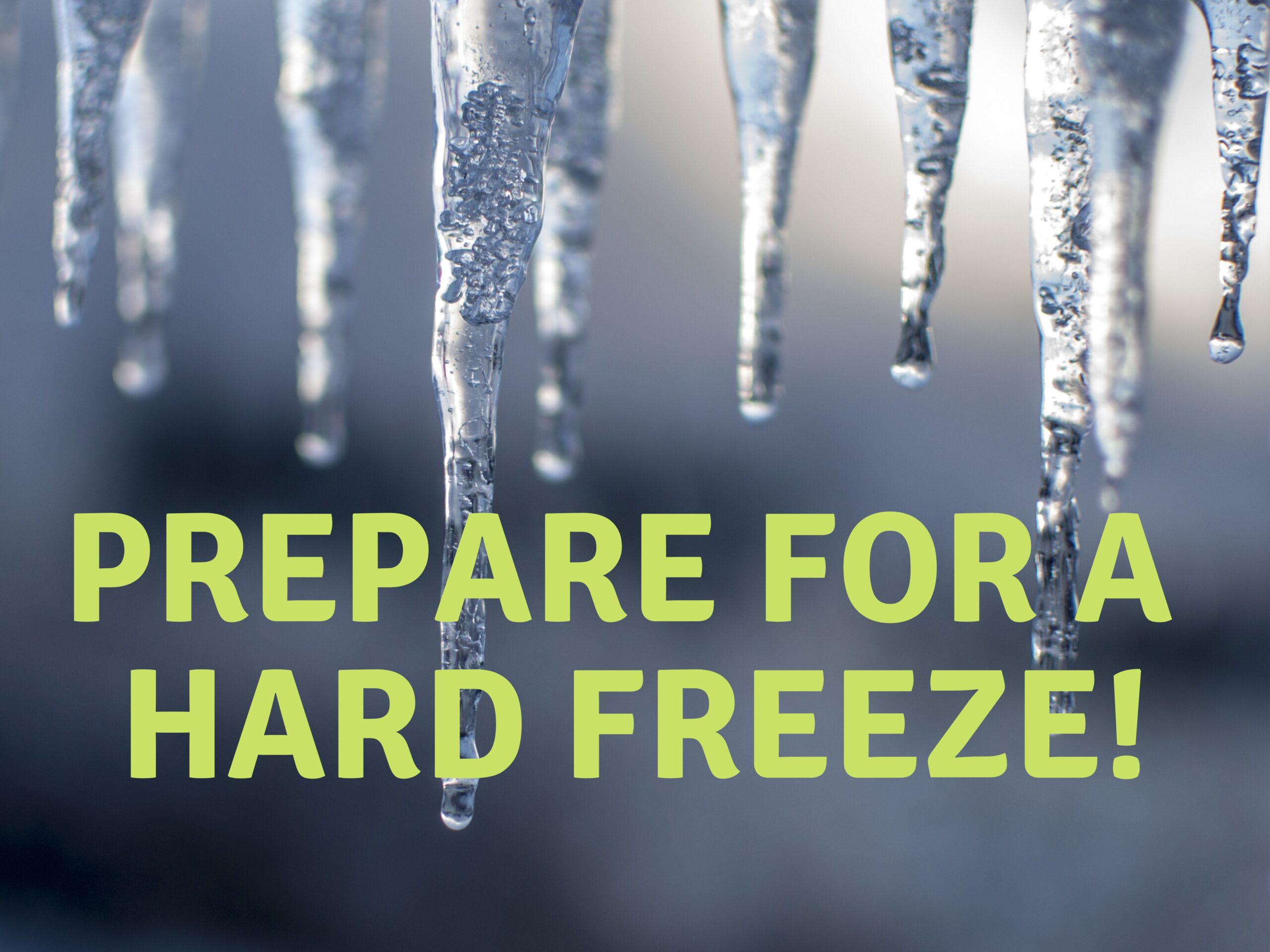
When do you know carrots are ready to pick?
The best way to tell if they are ready is to pull one up. They can be eaten at almost any stage, but you will get an idea of their size by pulling and checking.